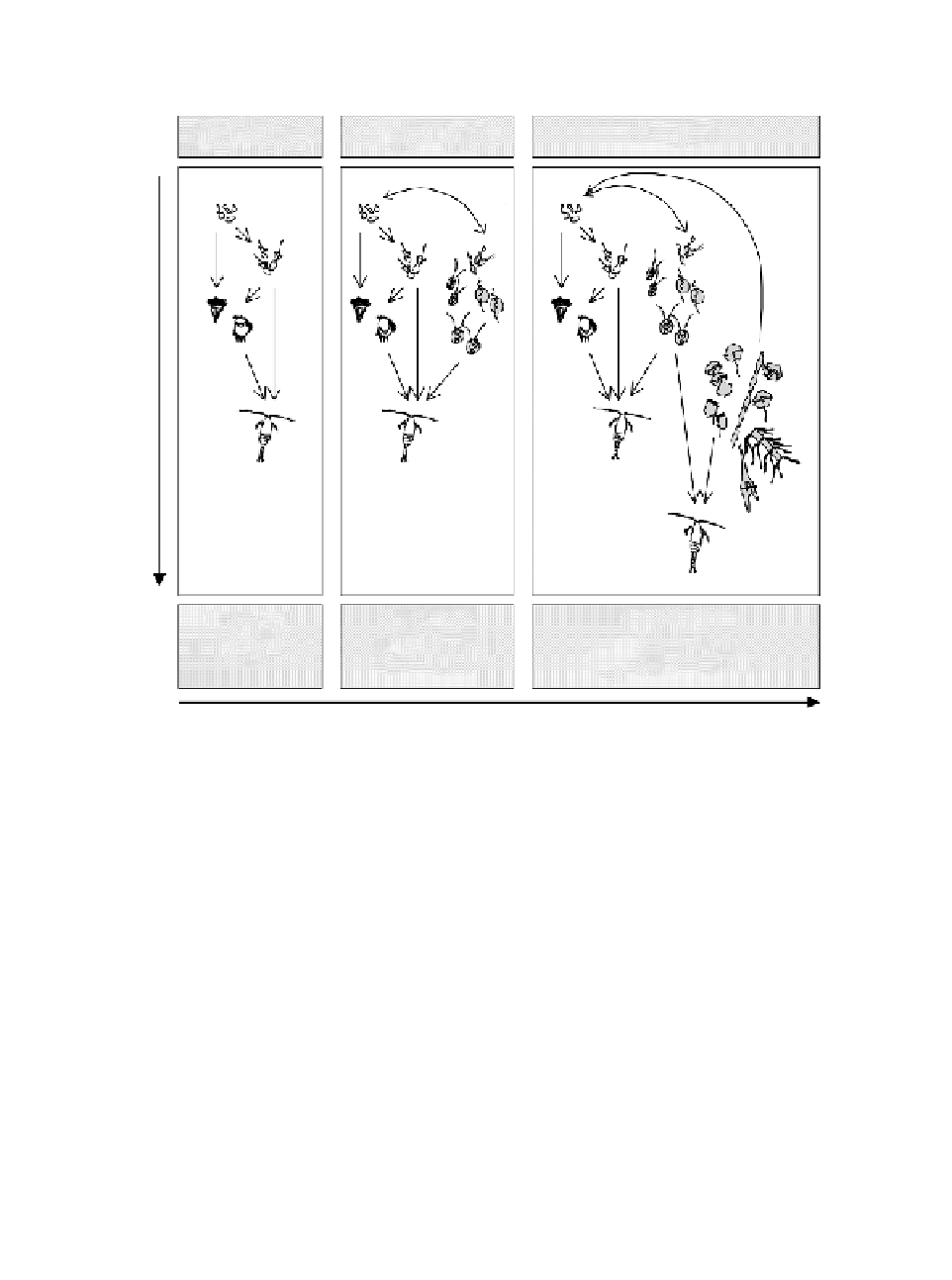Geoscience Reference
In-Depth Information
Oligotrophic
Mesotrophic
Eutrophic
Remineralization
Remineralization
DOM
DOM
Microbial loop
-
Small
heterotrophs
Microbial web
-
Small heterotrophs
Small autotrophs
Herbivorous web
-
Large heterotrophs
Medium to large autotrophs
Nutrient load
FIGURE 5.5
Representation of the changes in the planktonic food web with increasing
nutrient load in coastal lagoons. Microbial loop is characteristic of oligotrophic waters.
In mesotrophic waters, small phytoplankton (autotrophs) are directly eaten by small
crustaceans that release dissolved organic matter (DOM) used as substrate by bacteria.
Bacteria, on the other hand, remineralize nutrients that can be effectively uptaken by
autotrophs. At the eutrophic state, large-celled phytoplankton is the main food source for
herbivores. DOM released by large cells can maintain both systems, the microbial loop
and the microbial web.
competitive principles (bottom-up control mechanism) a change from small flagellates
to large diatoms can be expected with increasing eutrophication. However, the com-
plex dynamics induced by predation processes may greatly modify this trend and it
cannot be automatically deduced that the eutrophication process leads to a final stage
dominated by large diatoms because of the many indirect effects involved.
The uptake efficiency also depends on other environmental factors such as light
and temperature. Temperature imposes both a higher and a lower limit for algae
growth. The relationship between growth rate and temperature describes a typical
asymmetric parabola, where optimum temperature for each species is displaced to
the maximum temperature supported.
74
Light dependence of nutrient uptake, on the
other hand, exhibits a truncated hyperbolic function.
75


















Search WWH ::

Custom Search